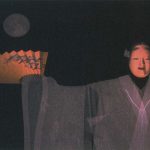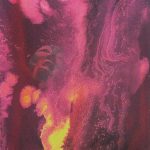Akiko Tohma: Yuki – The Spirit of the Snow
Artist(s):
Title:
- Yuki - The Spirit of the Snow
Exhibition:
- SIGGRAPH 2001: n-space
-
More artworks from SIGGRAPH 2001:


Creation Year:
- 2001
Medium:
- Animation
Category:
Artist Statement:
To examine how computers can attain the expression of Yugen (profound beauty) found in Japanese traditional Noh drama, a computer animation based on the Noh drama “Yuki” was created.’ The concept behind the creation was: the entire design should rely on the story; the movements of the Noh mask should be similar to the movements on an actual stage; and the animation sequences should be harmonized to bring out the most appropriate expressions from the Noh mask. By making these considerations, audiences could be expected to have diverse imaginative experiences even at a very subtle level, as in Noh drama.
“Yuki” is a short story about an encounter one night with “The Spirit of the Snow” by a traveling priest. For “The Spirit of the Snow,” the Noh mask called Ko-omote was created as described in “What Noh Masks Whisper to Us.” As the modeling was done with reference only to a carved wooden mask, the mask’s shape retained the 3D-controlled asymmetry of the real mask, as well as a fluent carved surface and detailed edges. These shape characteristics were responsible for generating subtle changes in the mask’s expression.
To move the Ko-omote mask, a head part and a skeleton of a body were created. Key frames were added to control all of the movements, which are in well-timed combinations with music and sound effects. In the dance part, the 3D models of a fan, a dance robe, and a wig band were bound to the skeleton. The character simulates basic movements of a Noh dance, and at the end, leaves towards the left side of the stage, in the same manner as in a real Noh play.
n some situations, parts of the character’s body become invisible. However, this seems to succeed in creating a more effective expression than a full appearance of details. Such visual effects are inspired by Noh drama, where the effects depend not on the direct representation of objects but on the audience’s imagination.
Technical Information:
Software: Alias|Wavefront Maya, Adobe After Effects
Hardware: SGI Onyx2, Mac G3
Other Information:
Modeling and Animation
Akiko Tohma
Composer
Shoji Yamashiro
Musician
Geinoh Yamashirogumi
Advisors
Jun Kurumisawa, Michishige Udaka, Ogamo Rebecca Teele
References
1. Tohma, A., Shimohara, K., and Tohkura, Y. (2000). Insight into reality through the creation of computer animation based on the Noh drama “Yuki.” Journal of Three Dimensional Images, 14(4): 188-193.






